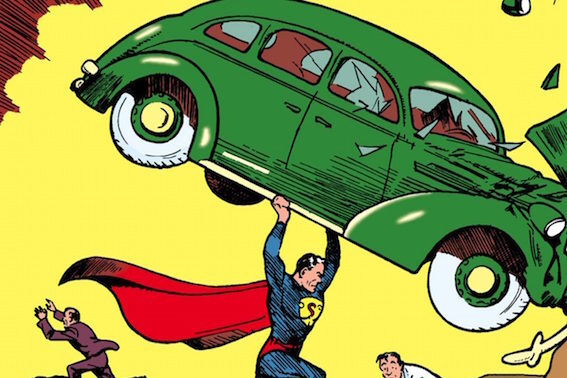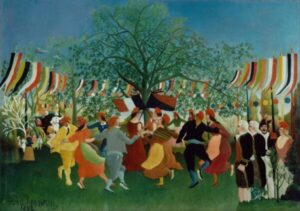10 Pop Culture Myths You Probably Still Believe
The world has always been a playground for misinformation, and chances are, it’ll stay that way for a long time. Whether it’s a mix-up, a misunderstanding, or someone deliberately twisting the facts, once a false idea gains momentum, it spreads like wildfire. One moment it’s just a whisper, the next it’s everywhere—from social media feeds to dinner table conversations. And weirdly enough, by the time anyone realizes it’s false, the fake version often feels more familiar than the truth.
This isn’t just about politics or global crises (though that happens too). It can be something as simple—and surprisingly sticky—as a myth from pop culture. You’d be amazed at how many people still think humans only use 10% of their brains (spoiler: we don’t), or that goldfish have a three-second memory (which is completely false—they can remember things for months).
The strange part? We’re not even always trying to spread lies. Sometimes it’s just a catchy story, or an idea that “feels” right. And once people start repeating it—on blogs, YouTube, or TikTok—it becomes digital folklore. The line between truth and myth blurs, and it stays blurred until someone, somewhere, decides to dig deeper and ask: “Wait, is this even real?”
Here’s where things get fascinating. In a world overflowing with data, curiosity becomes a superpower. The ability to pause, question, and actually research something can feel like discovering a secret shortcut through the noise. And that’s exactly why platforms like this one exist—to bring you not just content, but content that surprises you, challenges you, and sticks with you.
10. Tang Was Never Made for Astronauts—But That Didn’t Stop the Myth

You’ve probably heard it before—Tang, that bright orange powdered drink, was made for astronauts. It’s one of those ideas that seems to have cemented itself into pop culture, like the notion that NASA invented Velcro or that space food comes only in tubes. But here’s the twist: Tang was never created for space travel.
Tang hit store shelves in 1959, and honestly, it didn’t make much of a splash. Most people weren’t exactly racing to mix orange powder with water. But something unexpected happened in the 1960s: NASA needed a drink that worked well in zero gravity, and plain water—due to purification chemicals—tasted downright awful. So someone figured out that Tang could mask that unpleasant taste. Problem solved. Kind of.
Contrary to what advertising later led people to believe, NASA didn’t invent Tang. They didn’t even particularly like it. In fact, Buzz Aldrin famously said it was terrible. But it was powder-based, lightweight, and easy to store—a practical fit for space missions, not a gourmet delight.
Here’s where it gets clever. After astronaut John Glenn took Tang into orbit, General Foods (not General Mills, by the way—a common mix-up) saw an opportunity. They leaned hard into the space association. Suddenly, Tang was being marketed as the astronaut drink. They let the public assume NASA had something to do with it. And the myth stuck like gravity.
To this day, many people still think Tang was a space-age innovation born in a lab at NASA. But really, it’s just a case of smart marketing, a half-truth that went cosmic. It’s a perfect example of how everyday myths take off—and how, sometimes, we want to believe the story, even when it’s mostly air.
9. The Surprising Truth: Hobbits and Their “Giant Feet” Myth
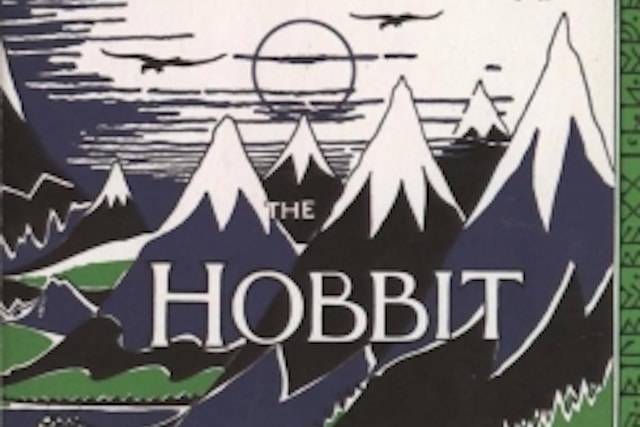
In the enchanting realm of Middle – Earth, J. R. R. Tolkien was the mastermind behind every detail of the characters and the world they inhabited. He painted vivid pictures with his words, introducing us to hobbits, elves, dwarves, and all the other fascinating beings. But there’s one widespread belief about hobbits that might just surprise you: the idea that they have big feet.
Let’s start with what Tolkien himself wrote. His descriptions of hobbits were rich and detailed. He mentioned that hobbits had hairy feet with leathery soles. This was because they didn’t wear shoes; instead, their feet were well – adapted to the natural environment of the Shire. Their hairy feet helped protect them from the rough terrain, and the leathery soles provided durability. However, there’s a crucial point here: Tolkien never described hobbits as having enormous or unusually large feet.
In fact, Tolkien was not only a writer but also an illustrator. He created his own sketches and illustrations of the hobbit world. In these artworks, the hobbits are depicted with normal – sized feet. They are in line with what one would expect from a small, peaceful race living in a idyllic countryside. His illustrations were a direct representation of his written descriptions, showing that the hobbits’ feet were just a natural part of their anatomy, not a comically oversized feature.
The answer lies in the hands of artists and filmmakers. In the 1970s, the Hildebrand Brothers, well – known in the world of fantasy art, took on the task of bringing the hobbit world to visual life. While they were skilled in creating fantastical imagery, they took some artistic liberties. One of these liberties was giving the hobbits large feet in their drawings.
At that time, these illustrations were the first exposure many fans had to what a hobbit might actually look like. Since the illustrations were so visually striking, the image of the big – footed hobbit stuck in people’s minds. As the years went on, movies were made based on Tolkien’s works. Although filmmakers had access to Tolkien’s original descriptions, the image of the big – footed hobbit had already become deeply ingrained in popular culture. They, too, felt the need to some extent to conform to the public’s perception, and thus the myth was perpetuated through the silver screen.
This is a classic example of how our perception of a character can be shaped by the work of later artists rather than the original creator’s vision. It’s amazing how a simple misinterpretation can snowball into a widely – accepted fact over time.
8. Chinese Checkers Isn’t Chinese—And That’s Just the Start of the Confusion

At first glance, the name Chinese Checkers seems pretty self-explanatory: it must be a classic game from China, right? Not even close. Despite the exotic name and the star-shaped board that might look like it has Eastern roots, the game has absolutely nothing to do with China.
In fact, the game’s tangled history is one of the most fascinating examples of marketing spin in the board game world. The version most of us know today started gaining popularity in the United States in the 1930s, but its real roots go much deeper—and farther west. Chinese Checkers is actually a modified version of a German game called “Stern-Halma”, which itself was inspired by Halma, an American game created in the late 1800s.
So yes, you read that correctly: a German version of an American game got rebranded in the U.S. as something “Chinese.” Confusing? Definitely. But that was part of the plan.
The name switch happened when the Pressman Toy Company decided to spice things up with what they called an “Oriental mystique.” They slapped on a pseudo-Asian aesthetic, gave it a new name, and marketed it as a game from the East, tapping into the Western fascination with foreign cultures. It worked. Sales soared. And for decades, people just assumed it had Chinese origins.
It’s a classic example of how cultural branding can reshape reality. A name, a few symbols, and suddenly an entirely Western game becomes a so-called exotic pastime. You’ll find similar stories in everything from fortune cookies (spoiler: also not Chinese) to kung pao chicken.
7. Garfield: The Unintended Comedy Icon?
Hey there! If you’ve ever sat down with a Garfield comic and thought, “Hmm, this isn’t really hitting the humor mark,” take heart. You’re in good company. Because guess what? Garfield’s creator, Jim Davis, never set out to make this iconic feline a laugh – riot in the first place.
Jim Davis had a very different vision for Garfield. He never actually intended for Garfield to be funny. Yep, you read that right! So, if a Garfield strip leaves you scratching your head, wondering where the punchline is, it’s not some fluke. And if the jokes seem to endlessly circle around Garfield’s portly figure, Odie’s perceived lack of smarts, or Garfield’s well – known disdain for Mondays, well, that was all part of the plan.
In a 1982 interview, Davis shared some interesting insights. He had noticed that in the world of comics, characters like Snoopy were raking in the cash, especially when it came to licensing deals. But Charlie Brown? Not so much. He also observed that the comic scene was teeming with dog characters, but there was a noticeable lack of cool, marketable cat characters. So, Davis saw an opportunity. He realized there was a goldmine of a market waiting for a cute, memorable cat character that could be licensed and sold all over the place – and we do mean all over the place.
Davis didn’t sit down one day and decide to create a side – splittingly funny comic about a lazy cat. Instead, he intentionally crafted a collection of repetitive jokes and set out to make his little cartoon. But here’s the kicker: the main goal wasn’t to get people rolling on the floor with laughter. Nope, it was all about making money.
Davis revealed that he would spend around 14 hours per week actually creating the comic itself. But get this – he’d spend up to 60 hours on promotion and licensing. That’s a whole lot more time dedicated to the business side of things than the creative, comedic aspect.
Now, take a look around. Garfield’s face is plastered on everything from T – shirts and coffee mugs to entire pizza cafes, like the one in Kuala Lumpur, and countless other items. And why is that? It’s because Jim Davis wanted money. He knew that by creating a character that could be easily recognized and associated with a certain lifestyle, he could license Garfield’s image and make a fortune.
And you know what? It seems to have worked out pretty darn well for him. Garfield has become a global phenomenon, not because he’s the funniest cat in the world, but because he’s a walking (or sleeping, more accurately) money – making machine.
6. The Star Trek Theme Has Lyrics—And the Reason Why Is Stranger Than You Think
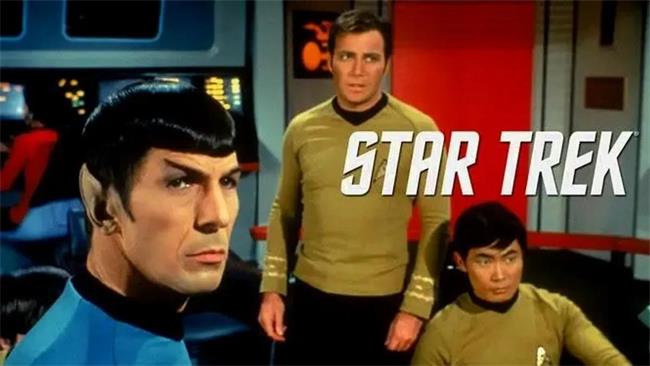
Even if you’ve never sat through a full episode of the original Star Trek, odds are you can still hum that iconic opening theme. It floats in right after Captain Kirk’s legendary monologue, and for most people, it’s always been a soaring, wordless tune. But here’s a plot twist that might surprise even die-hard Trekkies: the Star Trek theme song actually has lyrics—and they were written by none other than Gene Roddenberry, the show’s creator.
The music itself was composed by Alexander Courage, a talented arranger whose work helped define the sci-fi aesthetic of the 1960s. Under standard industry practice, Courage was set to receive full royalty payments every time the show aired—every rerun, every replay, every moment that iconic theme was broadcast would earn him a paycheck.
But things didn’t play out as smoothly as he might’ve hoped.
About a year into the show’s run, Roddenberry exercised a little-known clause in their agreement: he had the right to add lyrics to the theme. The result? A set of never-used and frankly awkward lyrics that no one ever expected to hear. They were never meant for broadcast. They weren’t even good. But they were good enough to make Roddenberry the official co-writer of the song.
And that changed everything.
By adding those lyrics—even though they were never used—Roddenberry claimed 50% of the royalties, cutting Courage’s earnings in half. When asked about the move, Roddenberry was reportedly unapologetic. According to Courage, he said, “Hey, I have to get some money somewhere. I’m sure not going to get it out of the profits of Star Trek.”
That might sound shocking today, but it was completely legal. And it’s just one more reason why the history of Star Trek is full of behind-the-scenes drama worthy of its own episode.
5. Red Solo Cup Myth: Those Lines Aren’t What You Think They Are

Red Solo cups are practically a cultural icon at this point—showing up at backyard BBQs, house parties, tailgates, and just about any event where drinks are poured and rules are flexible. Their bold color, disposable convenience, and wide-mouth design have made them a staple of casual American life. But one of the most persistent myths about these plastic cups refuses to die: that the faint horizontal lines on the side are meant to measure out standard alcohol servings.
It sounds plausible. You’ve probably heard the “science” before:
- Top line = 12 oz for beer
- Middle line = 5 oz for wine
- Bottom line = 1 oz for spirits
Makes for a great party trick, right? A clever design that subtly teaches responsible drinking?
Well, not exactly.
According to the official word from the Solo Cup Company themselves (now owned by Dart Container), those lines were never designed for measuring drinks. They’re simply a byproduct of the cup’s manufacturing process—support ridges that reinforce the structure of the cup and make it easier to hold, stack, and mass-produce.
You can check the company’s own myth-busting statement here.
While the measurements might coincidentally line up with some standard drink sizes, that was pure happenstance. In reality, the Red Solo cup was never intended to be a measuring tool for anything, let alone your Chardonnay or whiskey shot.
And let’s be honest: if someone is sipping wine out of a Solo cup, they’re probably not too worried about pouring exactly five ounces. As for taking a shot? Use a real shot glass. They exist for a reason—and no one wants to be that person arguing over milliliters at a party.
You see those lines and think you’ve discovered a hidden life hack, just remember: it’s a manufacturing quirk, not an alcohol meter. But hey, it’s still a fun piece of drinking lore—and like many popular myths, it persists simply because people want it to be true.
4. Back to the Future’s Sequel Was a Complete Accident

When most people think of iconic trilogies, Back to the Future ranks near the top—blending sci-fi, comedy, and adventure into a cultural touchstone. The ending of the first film seems to scream “sequel.” Doc Brown bursts in with wild eyes, proclaiming to Marty, “We’ve got to go back to the future!” while the DeLorean takes flight. It feels perfectly set up for another chapter.
But here’s the twist: there was never supposed to be a sequel.
That dramatic cliffhanger? It wasn’t meant to launch a franchise—it was just a cheeky gag. Director Robert Zemeckis and writer Bob Gale have openly stated that the final scene was intended as a fun, over-the-top ending. In fact, Gale once said, “If we had seriously planned for a sequel, we never would have put Jennifer in the car.” That made things way more complicated in Part II.
The idea of a continuation only came after the unexpected, massive success of the original 1985 film. The studio saw a goldmine, and the filmmakers were basically nudged into turning that one-off joke into an entire time-hopping saga. That’s when they retroactively added the now-famous “To Be Continued…” screen to the original’s home video release—something you won’t find in the original theatrical cut.
The result? Two sequels, a cult following, a musical adaptation, and decades of merch, fan theories, and even predictions about hoverboards and self-lacing sneakers.
But behind it all is a great reminder that sometimes, even the most beloved cinematic universes start by accident. What looked like careful planning was really just a punchline that snowballed into pop culture legend.
3. Schrödinger’s Cat Was a Joke—A Very Smart, Scientific Joke
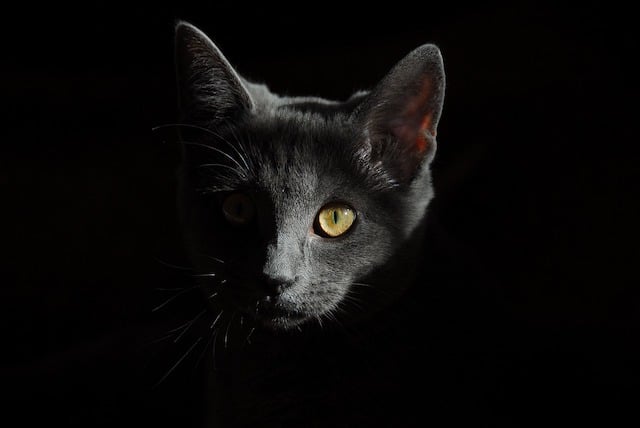
We’ve all heard of it—the cat in the box. The bizarre, brain-bending paradox where the cat is both alive and dead until someone looks inside. Schrödinger’s Cat is one of the most famous metaphors in science, popping up everywhere from classrooms to cartoons. But here’s what many people don’t realize: the whole thing was never meant to be taken literally. In fact, it was kind of a sarcastic jab at the science of the time.
In 1935, Erwin Schrödinger, an Austrian physicist and one of the founding fathers of quantum theory, created the thought experiment not to explain quantum mechanics—but to mock a popular interpretation of it. At the time, the Copenhagen interpretation—pushed by Niels Bohr and Werner Heisenberg—claimed that quantum particles exist in a superposition of states until observed. Schrödinger found this downright absurd. To expose its weirdness, he scaled the idea up to something horrifyingly familiar: a cat in a box.
According to the experiment, a cat is sealed in a box with a vial of poison that may or may not be released, depending on whether a radioactive atom decays. Since atomic decay is a quantum event, and supposedly nothing is real until it’s observed, then technically—under this interpretation—the cat is both alive and dead until you open the box.
Schrödinger’s point? “This is ridiculous.” He wanted to show just how far-out quantum theory could sound when applied to real-world, macroscopic objects. But over time, people started misinterpreting the metaphor as if Schrödinger had meant it seriously—as a teaching tool, not a critique.
Today, “Schrödinger’s Cat” survives in everything from pop science books to internet memes. But behind the paradox lies a bigger lesson: even in science, sometimes the most memorable ideas are born from mockery, not meaning.
2. Festivus Wasn’t Just a Joke—It Was a Real Holiday (Sort Of)
Seinfeld fans know it as the holiday “for the rest of us.” Festivus, complete with an unadorned aluminum pole, the Airing of Grievances, and Feats of Strength, has become a beloved oddball tradition. But while most assume it was invented in a writers’ room as sitcom satire, the truth is far stranger—and more real.
Festivus didn’t start on TV. It actually began in the living room of Seinfeld writer Dan O’Keefe, whose father invented the holiday decades earlier as a private family ritual. According to O’Keefe, Festivus was something of a mystery holiday, observed without rhyme or reason. His dad would randomly declare the day had arrived, and the family was expected to participate—no questions asked.
There was no pole. No formalized structure. Sometimes it involved reading from a tape recorder. Other times it just meant awkward family dinners and bizarre philosophical conversations. The whole thing was cryptic and chaotic. Dan’s brothers even described it as “an annual festival of weirdness.”
Years later, when writing for Seinfeld, Dan pitched the idea of Festivus for an episode—and the rest is comedy history. What began as one man’s surreal family tradition became a cultural phenomenon, with thousands of people celebrating Festivus around the world each December 23rd. You can even find aluminum Festivus poles for sale online and Festivus guides to hosting your own celebration.
1. The Shocking Truth About Dracula: Bram Stoker’s “Non-Fiction” Horror

You know how modern horror movies like The Blair Witch Project or The Conjuring claim to be “based on true events” to make them scarier? Well, Bram Stoker might have been one of the first to pull this trick—except he really wanted people to believe Dracula was real.
Stoker’s Bold Claim: “This Actually Happened!”
When Stoker first pitched Dracula to his publisher, he didn’t present it as fiction. Instead, he insisted that Jonathan and Mina Harker—the novel’s protagonists—were real people who had shared their terrifying experiences with him. Imagine telling your editor, “Oh yeah, my friends were hunted by an immortal blood-drinking aristocrat. Totally true story!”
Unsurprisingly, his editor wasn’t convinced. This was 1897, just a few years after Jack the Ripper had terrorized London. The last thing anyone wanted was another “real-life” monster stalking the streets—especially a supernatural one.
The Censored Manuscript: What Got Cut?
To get Dracula published, Stoker had to make major changes. The original draft was 101 pages longer, but the publisher forced him to remove entire sections. The version we know today starts on what would have been page 102—meaning we lost nearly a third of the story. What was in those missing pages? Theories range from darker vampire lore to even more “factual” framing.
The Creepy Real-Life Inspirations
While Dracula wasn’t actually true, Stoker did weave in eerie real-world details:
- The Demeter Ship Mystery: In the novel, Dracula arrives in England aboard the Demeter, a ghost ship with a dead crew. Stoker based this on a real incident—the Dmitri, a ship that ran aground carrying crates of mysterious earth. Witnesses reported seeing a large black dog fleeing the wreck… straight to a graveyard.
- Vlad the Impaler: Stoker borrowed the name “Dracula” from the infamous Wallachian ruler, though the real Vlad was more of a brutal warlord than a vampire.
Was Stoker Serious or Just Trolling?
Historians still debate whether Stoker genuinely believed his story was real, if he was just trying to sell more copies, or if he got lost in his own research. Either way, his insistence on Dracula being “true” adds a fascinating layer to one of history’s greatest horror novels.

